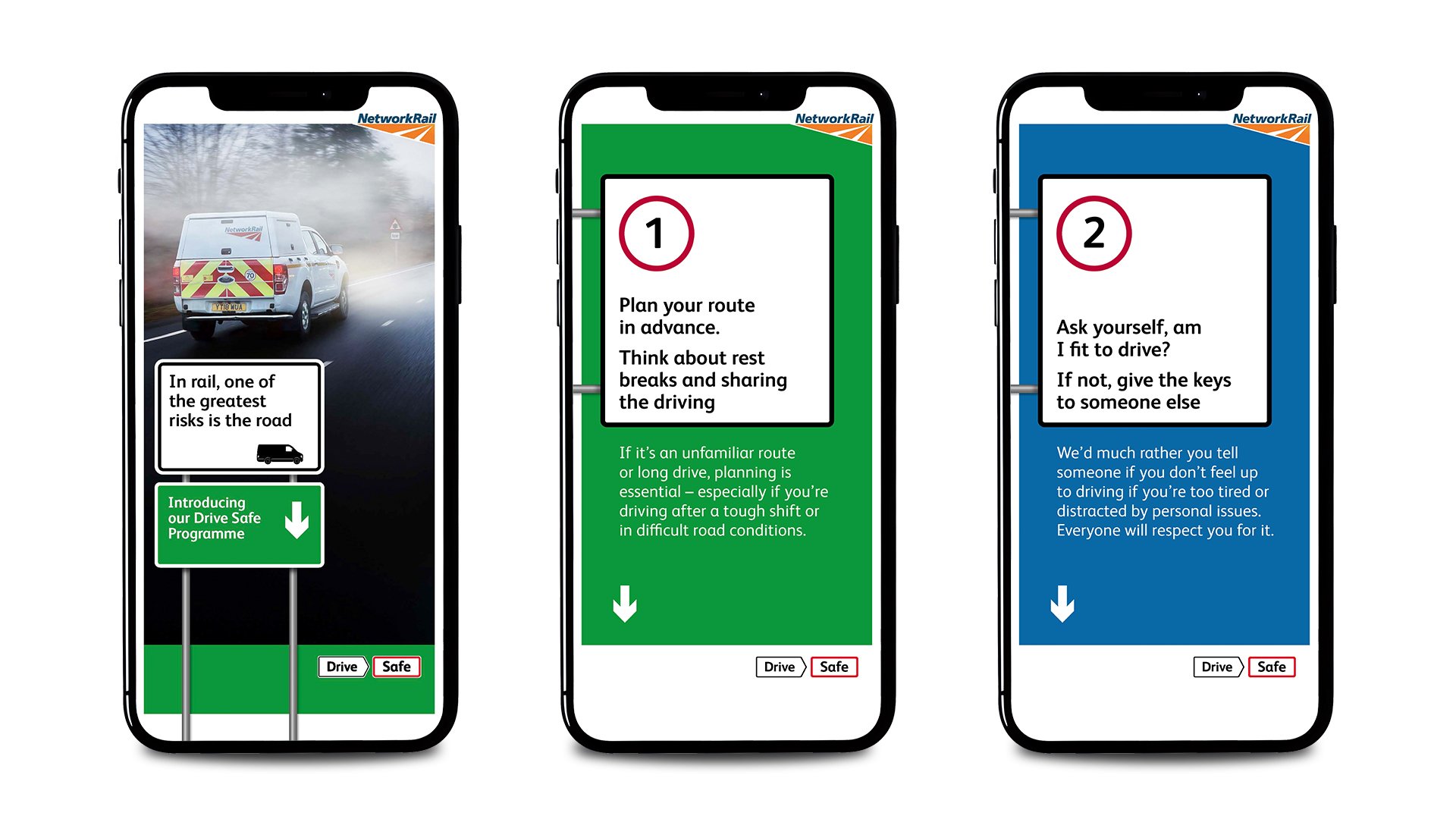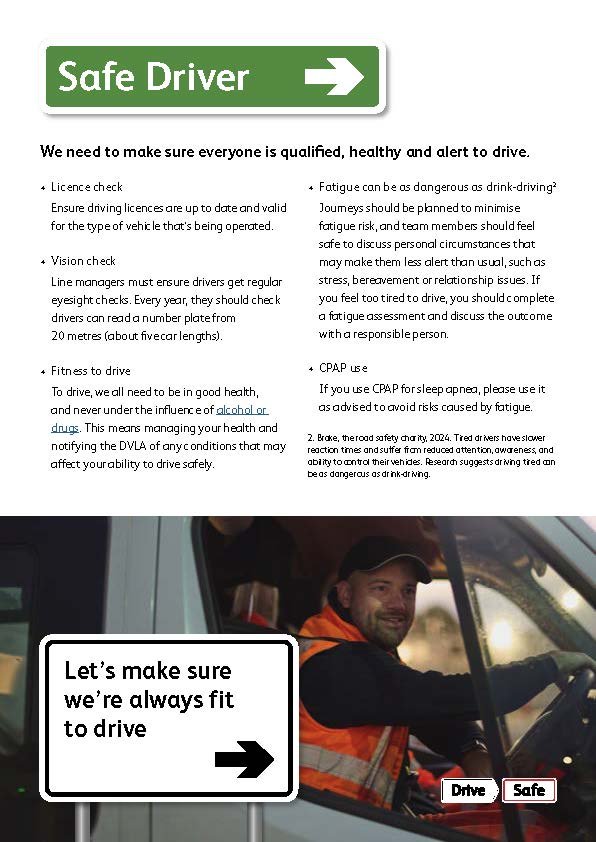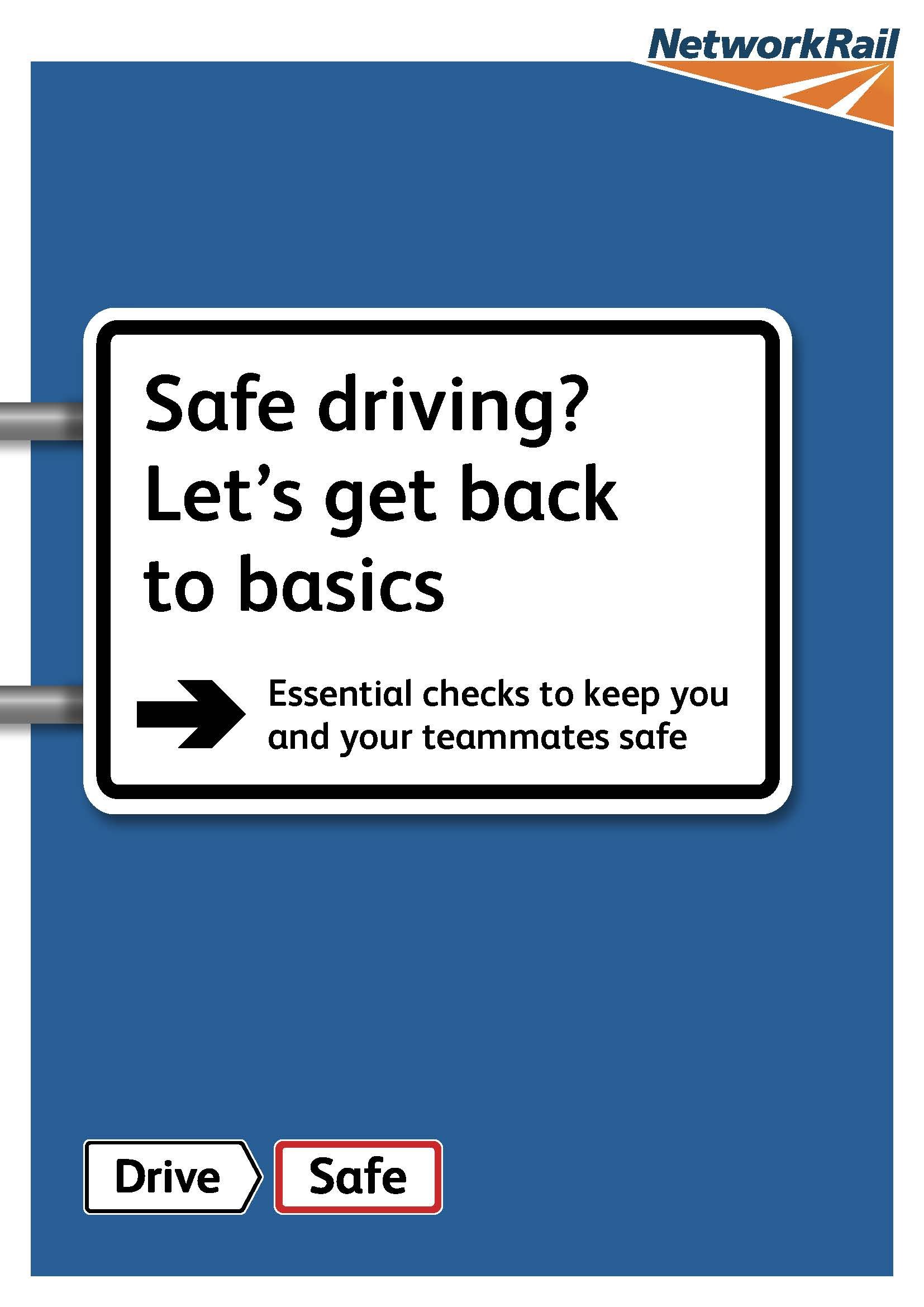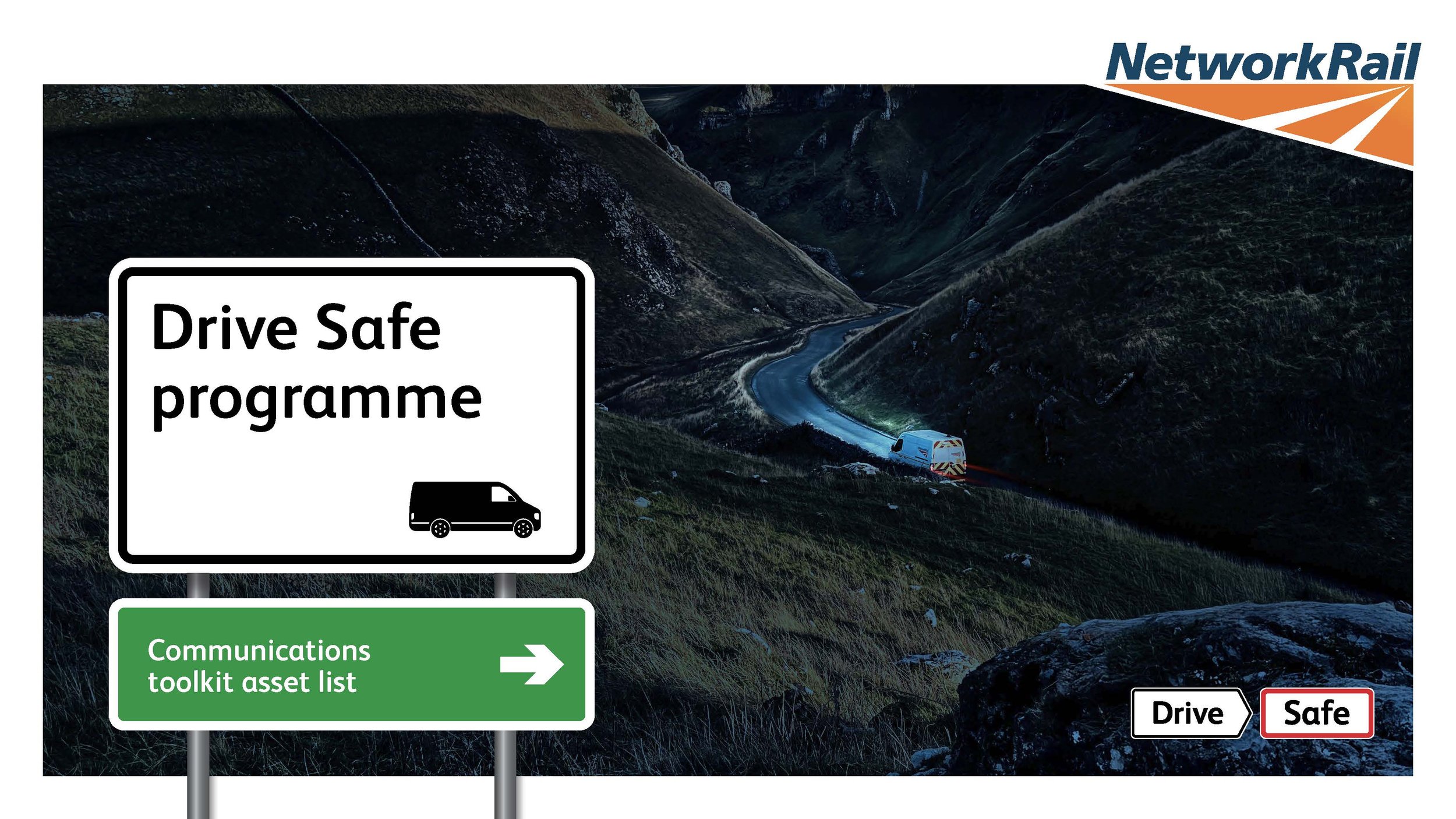
Our workDrive Safe – tackling an industry’s biggest killer
Genuine behaviour change takes time and commitment. A fleeting safety campaign can only achieve so much before it slips from the audience’s consciousness, which is why our work on Network Rail’s Drive Safe programme gives us such a valuable long-term opportunity to tackle the industry’s biggest killer: road traffic collisions*.
Yes, it’s an irony that one of the rail industry’s greatest risks is the road. Network Rail’s near 11,000-vehicle road fleet travels over 130 million miles a year, and every mile increases the risks, especially when so many journeys happen in the early hours when alertness levels drop following long, and sometimes arduous, physical shifts.
The underlying factors are stubborn and deep seated – mirrored in wider society
For Drive Safe, we started by going deep into the issues with a two-month initial discovery process. We wanted to understand the rules and systems that create the risks – not simply focus on driver behaviour which is the end-product of these processes. We spoke to roster planners, depot managers, road vehicle compliance mangers, trade union reps, the roads fleet team, health safety and environment experts – as well as many of Network Rail’s drivers.
Our study revealed there are so many factors at play including work pressures, resourcing issues, privacy concerns from trades unions about the use of telematics and many other interwoven issues.
The prevalence of speeding in society generally also provides context: 51% of drivers regularly break the speed limit in 30mph zones and 48% on the motorway**. If you do this in your own vehicle, is it that surprising that your habits might creep into driving for work?
It’s a daunting task but fortunately, there is so much knowledge and support out there. We joined the Road Risk Group of the Rail Safety and Standards Board (RSSB) to learn from industry specialists, we consulted the team at National Highways’ Driving for Better Business and signed up for training with Road Safety GB. Our learning continues and we’ll apply this to each phase of the activity.
How will we measure the programme’s effectiveness?
The work has only recently been launched but our measurement framework is in place.
A positive change in driver attitudes & intent
Initially measured by a baseline industry survey feeding into a wider evaluation study.
A reduction in collisions, fatalities and injuries
Our ultimate aim is to protect the workforce by reducing the risks, so that we get everyone home safe every day.
Improved driver behaviour evidenced by vehicle telematics
The road fleet team records data on speed, harsh braking, idling and other driver behaviour signals.
A programme built on solid foundations
We used our discovery insights and the knowledge of Network Rail’s safety specialists to create a programme framework to underpin the programme, clearly defining areas such as the purpose, objectives, audience and evaluation. This provides the foundation for changing the safety culture around driving at Network Rail. With this in place, we began untangling the issues using the COM-B behaviour change model, focusing on three of the key issues: managing alertness, speeding and distractions. These form the basis of our first 12 months of activity, following the ‘back to basics’ themed launch.
A unique identity for coherence and recognition
Everything that we learnt from the discovery phase was fed into our programme narrative and visual identity. Road risk is such a complex area within Network Rail, with so many compliance and safety workstreams – bringing it all together under the Drive Safe banner means more consistency and visibility. Distinctive branding also sends signals the organisation’s commitment: this is a strategy that’s here to stay. Drive Safe follows the client’s brand faithfully, whilst standing out as a strident, ambitious presence in a space where comms messages must work hard to be heard above the noise.




Creative ideas developed from front line experiences
We launched the programme during Rail Industry Road Safety Week, positioning it as a reset for road risk. Our creative approach was based on time spent with front line teams as well as their managers and project planners. We applied our learnings on getting through to the geographically dispersed teams, with a short video showing how driving pushes Network Rail’s people to their limits. We supported this with briefing packs and mobile-first guides that position the programme as a two-way conversation, with opportunities for everyone to give feedback that will inform the next phase of . We rebranded key documents such as the Driver Handbook and updated Safety Central, Network Rail’s online hub. We promoted this to the wider rail industry too, as many of Network Rail’s driving issues are shared by their peers.
We are at the start of what we hope will be a long journey. There’s so much more detail than we could include in this case study, so if you’d like to talk to us about Drive Safe, we’d love to share our learnings with you – feel free to contact the team.
*Network Rail and RSSB statistics. From 2009-2024 road traffic accidents were the biggest contributor to fatalities in the rail industry.
**National statistics: Vehicle speed compliance statistics for Great Britain: 2021, Department for Transport. Published 16 June 2022.










